I have a plot in polar coordinates. I used geom_path to connect the points, but I'd like the paths to be straight lines. Here's what I have so far:
example <- data.frame(c(5,4,3),c(0.9,1.1,0.6))
colnames(example) <- c("r", "theta")
myplot <- ggplot(example, aes(r, theta)) + geom_point(size=3.5) +
coord_polar(theta="y", start = 3/2*pi, direction=-1) +
scale_x_continuous(breaks=seq(0,max(example$r)), lim=c(0, max(example$r))) +
scale_y_continuous(breaks=round(seq(0, 2*pi, by=pi/4),2), expand=c(0,0), lim=c(0,2*pi)) +
geom_text(aes(label=rownames(example)), size=4.4, hjust=0.5, vjust=-1) +
geom_path()
I appreciate any suggestions.
